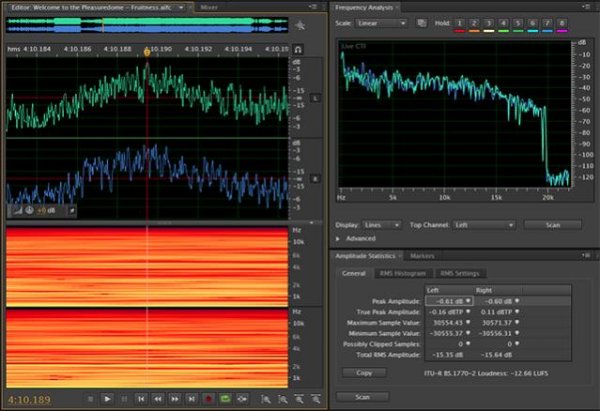Originally Posted by tomelex View Post
Of course, all we have are specs to show what our gear is capable of. The better the specs the better the reproduction accuracy. Of course there are other measurments than the standard ones that are published, and they reveal more. In the old days, atleast one could add up all their specs of all their gear (starting at the TT also) and at then end atleast have an "idea" of the accuracy of the reproduction. Feed a sinewave into your preamp and then measure the response at your listening position with any of the stuff you can buy on the web to do those mesurements and then you have an idea of what your system is doing, do it for all 20 thousand individual frequencies if you want, then do it for various dual frequencies and see what you get, do it at low volumes do it at loud volumes, there is plenty to measure.
The better the measurments the better the reproduction. Use pulse to check out the speakers, etc too. There is all kinds of stuff to get your measurments, then in the end, adjust the system via tone controls or dsp or whatever to get it to sound the way you want, especially since we all have different hearing and preferences for more or less of certain frequencies....like for me, turn down the treble as I seem to be hyper sensitive to even to this day. others, they might need to enhance the treble. This final tuning, even using a know tone control such as a SET amp, are how we define what we want to hear in the end, but fully knowing that when we invoke these deliberate tonal settings we are not concerned with accuracy too much but personal preferences.
I judge accuracy without measurments in a simple way, if I can clearly hear details in the music, then the system is typically pretty accurate for my tastes.
John, your conclusion is somewhat skewed. What I said before the sentence you bolded was that you can use measurements, and specs, to get an idea of how accurate your system is to the signal it is presented, from the output of the source all the way to your room interaction via measurments, of tones of any combination you want and any amplitude, and you can check group delay and all other manner of stuff.
Only then, once you know what your system can do, then you might decide to throw in your processors or tone controls etc to fine tune for your preference.
The point is measurments show you where you are at, then what you do to the system from then on is tuning it to your preference. You can start out with a system that has a $10K cartride (techdas) that rolls off 3 db already at 12 kHz, and once you measure this you know that anything that disagrees with the FR of that cartridge is an addition to the system distortions, and maybe after you measure, you can realize that that cartridge is why the system is so listenable, perhaps for a period of time, then one day you realize you are missing some "air" and you don't just willy nilly change out a preamp or something hoping for more "air", the measurments tell you what and why you are missing.
People who cant find subjective accuracy in properly designed and measured equipment have their preferences, and there are a ton of folks who prefer their own interpretations of what they want stereo to do for them, and given stereos severe limitations right up front, is it any wonder that many would not prefer a perfect stereo system when its presentation is so limited in the first place. They want some more of something, more flesh on the bones, etc, more third harmonic bite, more highs or less, more treble or less, more stereo affect etc, and this of course comes down to what they guy mixing and mastering thinks you should like in the first place.










